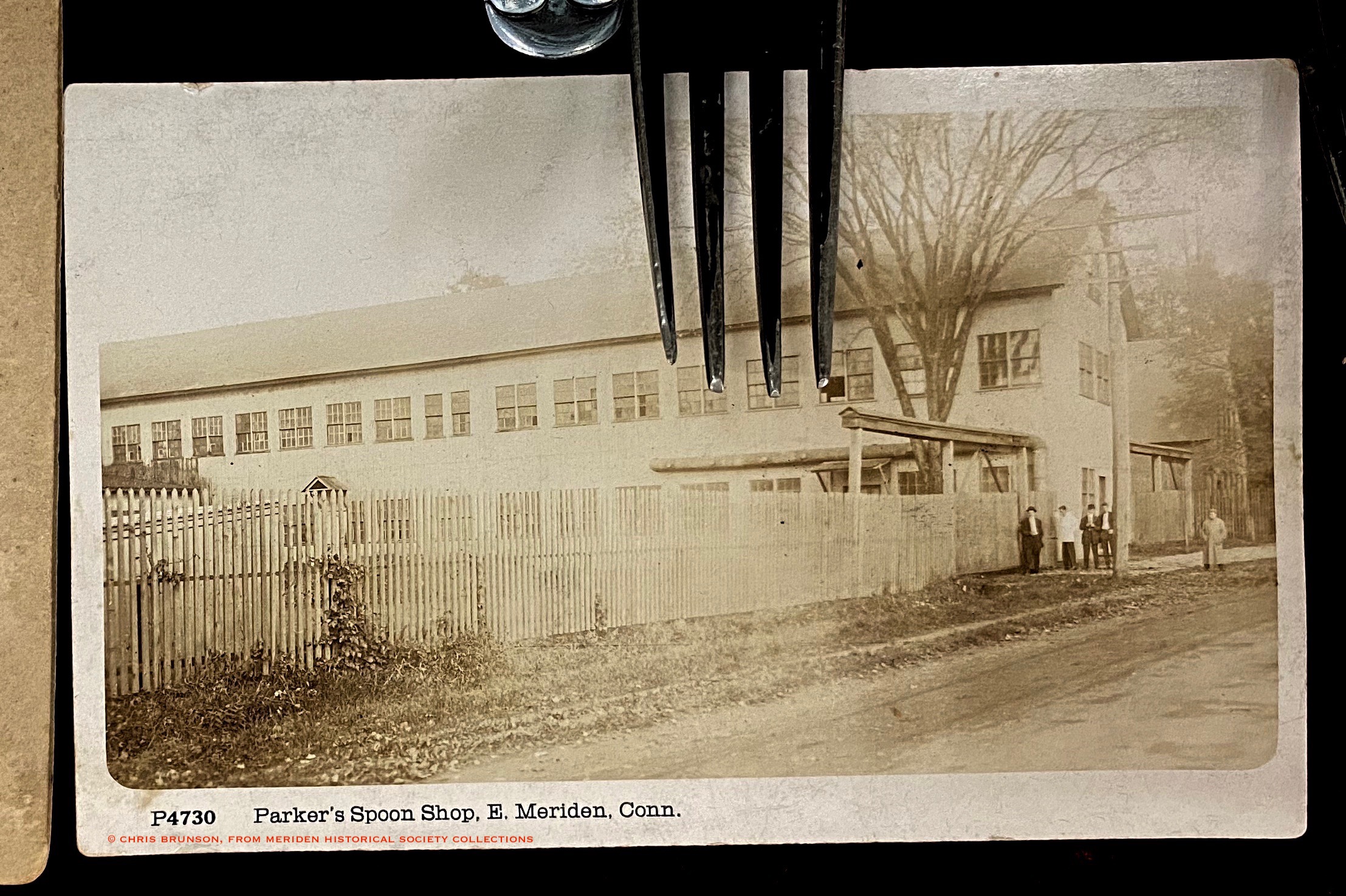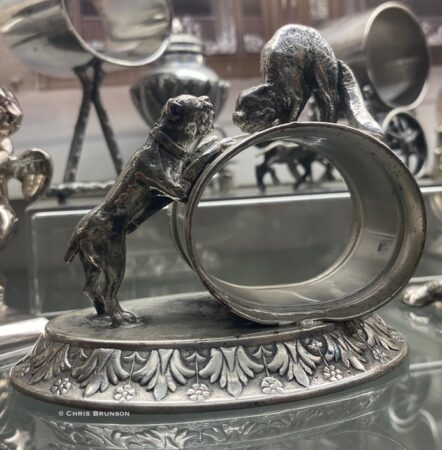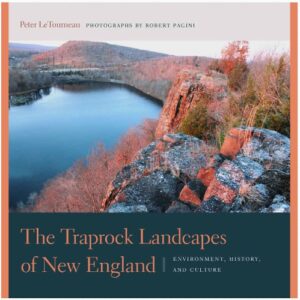Parker’s Spoon Shop and Around Town, Up Old Liberty Street, Meriden
“Write what should not be forgotten.” Isabel Allende
People. The past is present, literally in our collective DNA. Stories fill in the hazy places with images, objects, context.
Editor's note: The name “spoon shop” is rooted in real local history here – the brook powered an actual spoon shop factory that is now gone, but the waterpower source was New Dam to the east off Thorpe Avenue. A gated sluiceway was opened using a wheel to let the water flow on a timed schedule to run the machines, do work by use of graduated-sized belts overhead inside the building. The dam has since been upgraded and the machinery used then was removed. The story that led to this exploration, (quarry in Portland, spoon shop, business, ancestors, families), linked here.
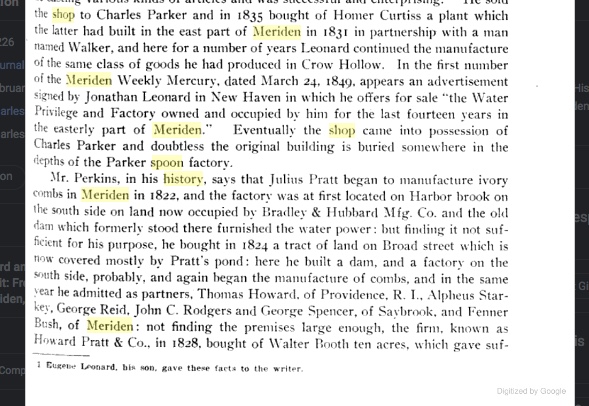
Detail about spoon shop, east side. Wondering too if The Spot was originally located there to Provide refreshing adult beverages after work? The late Ray Shoneck also related a story in person about helping two women and their Model T which broke down across from his farm. They were from a… shall we say cathouse…up Preston, later it was the Armack house. And it is gone now, a green saltbox stands there now. But perhaps workers at the spoon shop were customers from time to time? Maybe. People walked and local was within walking distance.
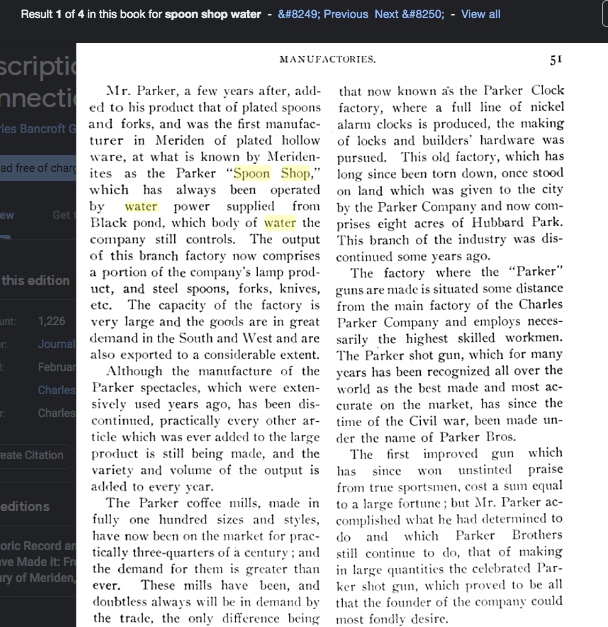
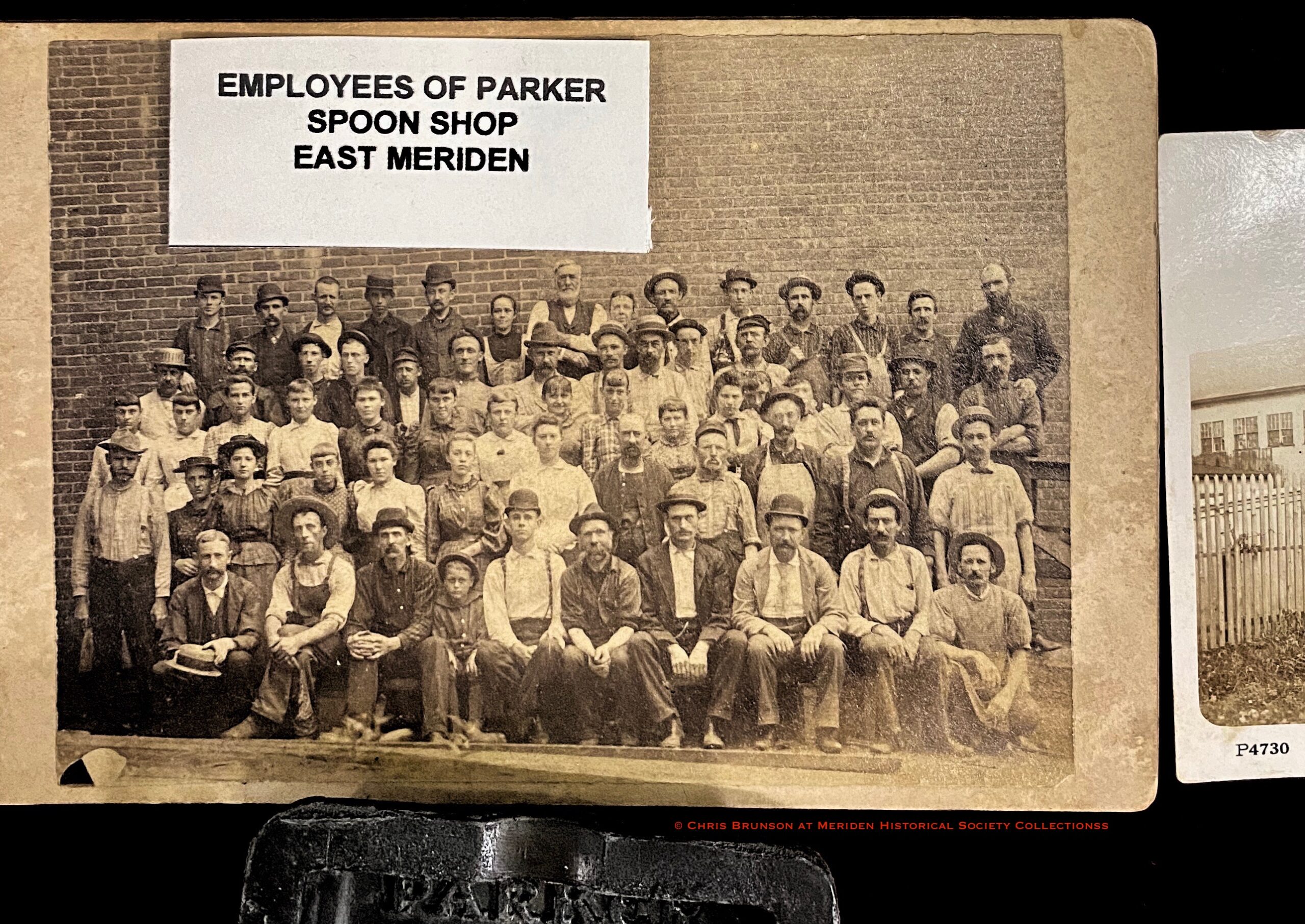
The workers. Photographer (as yet) not known, original image in the collections of the Meriden Historical Society.

Seen when editing images, the shelf of whitish-colored objects that may (or may not) be part of the Pratt Street story; note the small elephant at left on shelf. Ivory collection?
The Meriden Historical Society operates at three locations. The Meriden Museum & History Center, 39-41 West Main St., in the heart of downtown Meriden. This historic building’s size and central location offers public programs, exhibits collections, welcomes researchers and visitors.The Bernice Morehouse Research Center in South Meriden, 1090 Hanover Ave., South Meriden, hosts about half of the archives of International Silver. Call for more information. The Andrews Homestead, 424 West Main St., is one of the oldest homes in Meriden. Chock full of items from Meriden’s past, it is open to the public by appointment; (203) 639-1913.
To digest all seen and heard on a visit to Meriden Historical Society (MHS) collections (2022) takes time–thank you Ruth Borsuk, MHS president. Examining the images (captured via iPhone and ported over to studio desktop) leads to more questions and details revealed. Napkin ring holders which are works of art, craftsmanship. The story of one with a wishbone found elsewhere. A train in a blizzard stopped at Meriden and where that led. Charles Parker's home and barn. Still thinking about all. The lilac where a privy might have been located out back. The massive center chimney and dirt cellar.
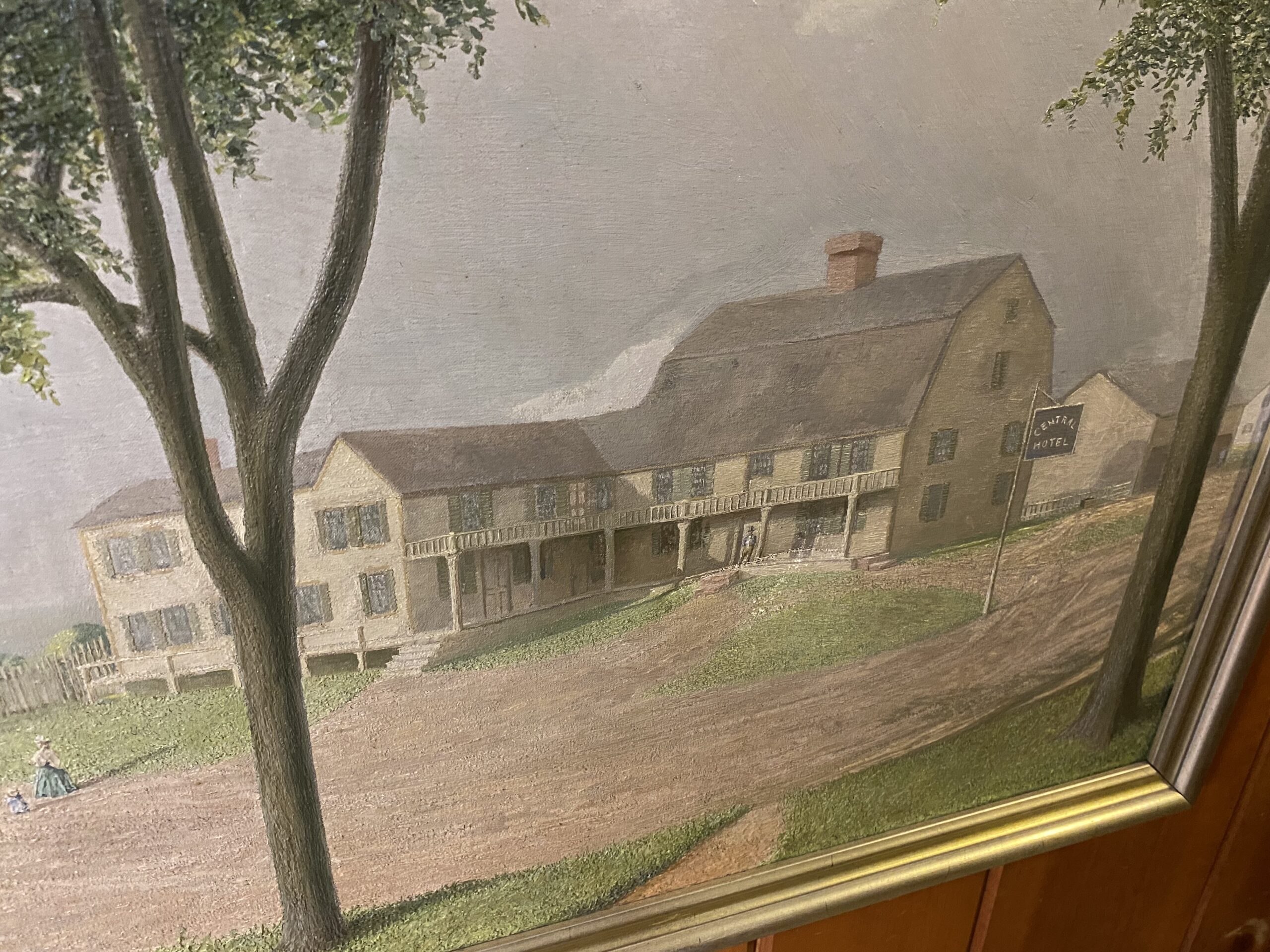
Was on Broad Street, Meriden, uptown. Then Gaj's service station was located approximately here; now it is a parts store. But note the shed to the right. For horses? Yes, want to know more. Was the Uptown Garage barn the hay storage (away from this building as hay stored can be a potential fire hazard) originally? Maybe nearby was a forge and blacksmith for making repairs to broken wheels, etc. Also for hot-shoeing horses. Were oxen in use for heavy cart loads along Broad Street? The hay barn and blacksmith would gradually shift to repairs for vehicles other than wagons and such. That it was a service station and garage would make sense. So many questions.
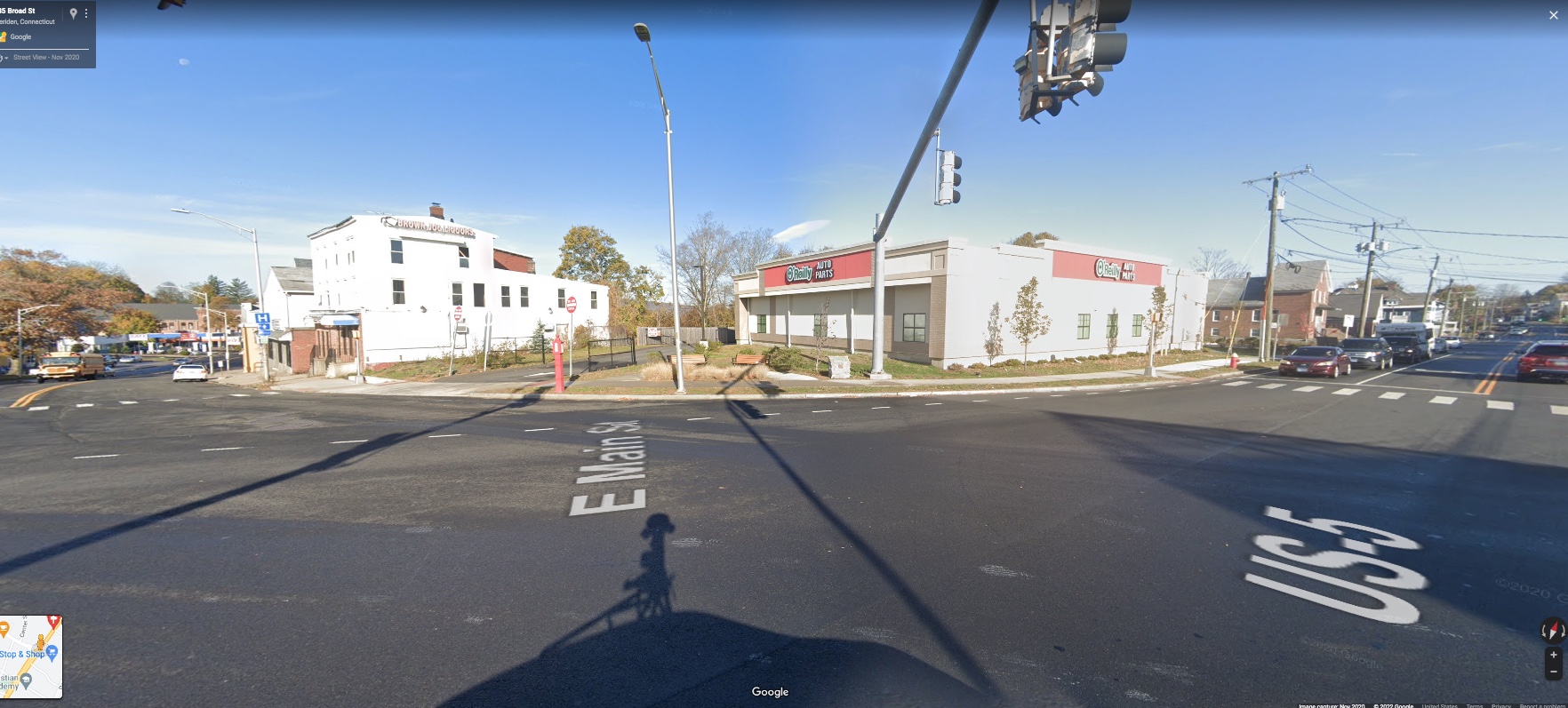
Approximately the same location on Broad Street via Google Maps, linked to the source for more exploration, different views. The Meriden Grange building can be seen in this image, to the right of the parts store location, same side of Broad Street.
“All stories interest me, and some haunt me until I end up writing them.” Isabel Allende
Sam the ragman. Julius Pratt. Manning-Bowman. New Departure. International Silver.
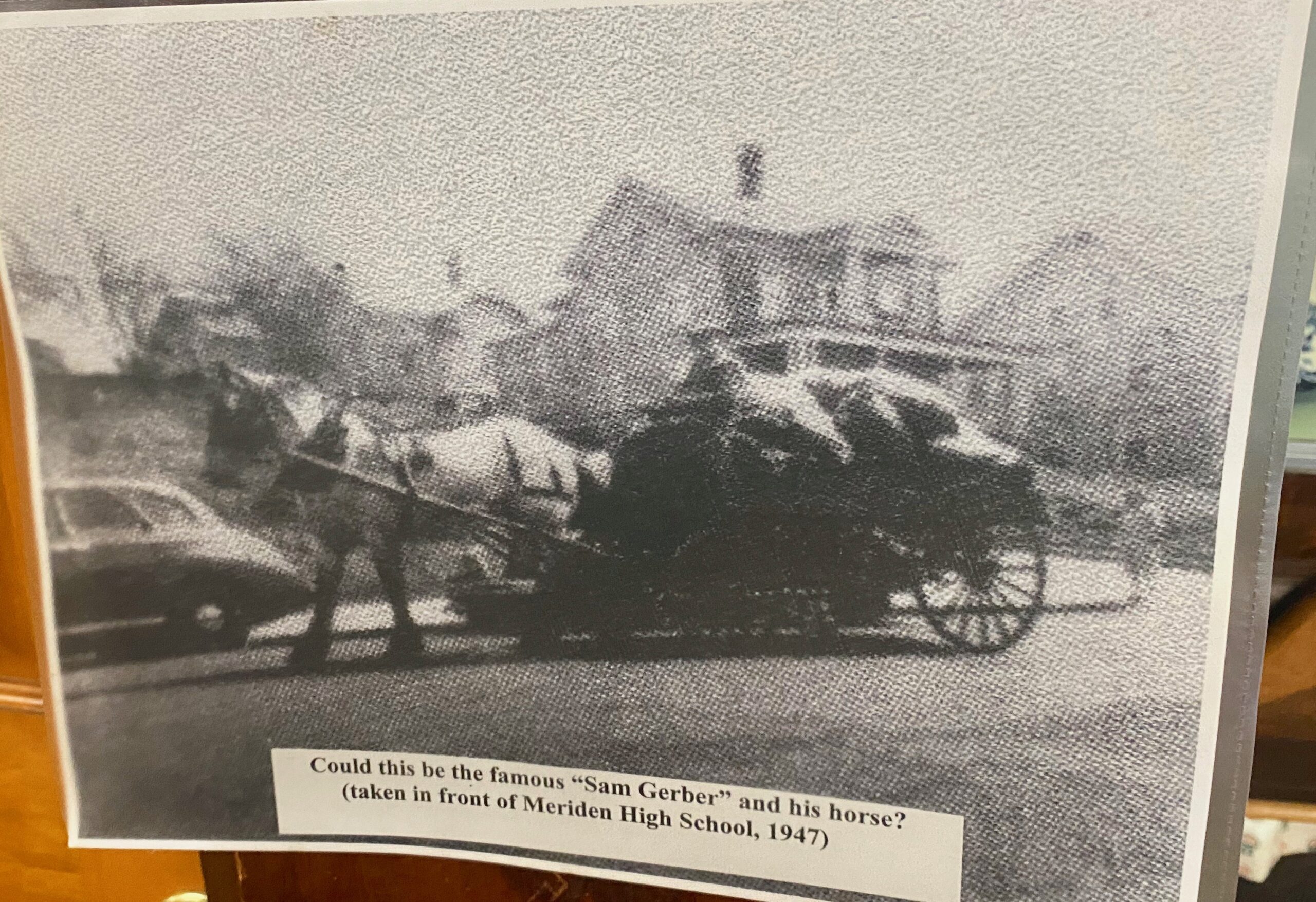
Sam the ragman, Pleasant Street. View from where once stood Meriden High School, later renamed Washington Middle School and now demolished.
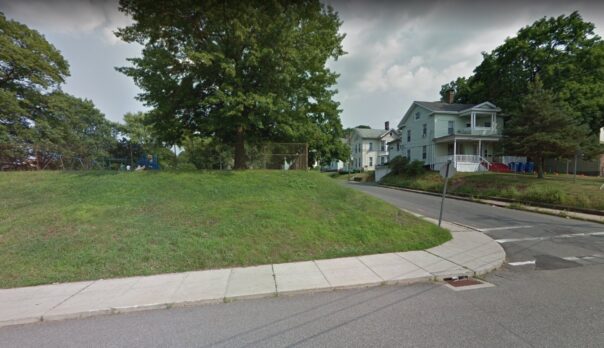
Pleasant Street 2011 via Google Maps, linked to source. Same house appears in the background that looks like the one in the Sam image.
The weight to hitch a horse to, a brake of sorts.
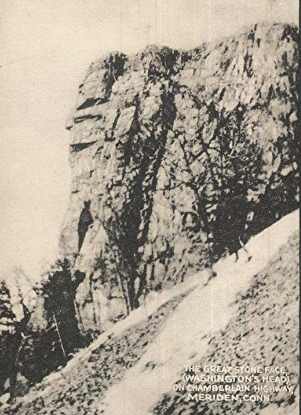
The Great Stone Face postcard. Also known as the old man of Meriden near Kensington, the Chamberlain Highway in Connecticut. In summer it is mostly obscured by foliage. A proposed development nearby may change that.
A contact shared, he may know more about the Central Inn that once stood on Broad Street uptown. Later, wondering if there is an indigenous history collection of objects, stories. Write that down. Thoughts of the great stone face in Meriden, a stone celt found in a yard while doing landscaping over near Silver Lake (Peat Works Pond) and so much more.
The Lion's Paw(s). Those great basalt cliffs as viewed from the interstate approaching Meriden and heading home, family's return from a trip to Oshkosh and other places.
MaryJean Giannetti, a teacher in Meriden, who does a science lesson story for fourth graders about “Sandy the Rock” and those cliffs.
Another place almost forgotten is the Caspar Hall's home place. The quest continues with more details to write about Liberty Street and Liberty Road. Digitized image allows imagination to fuel research, where was this building and how was it sited for views, weather.
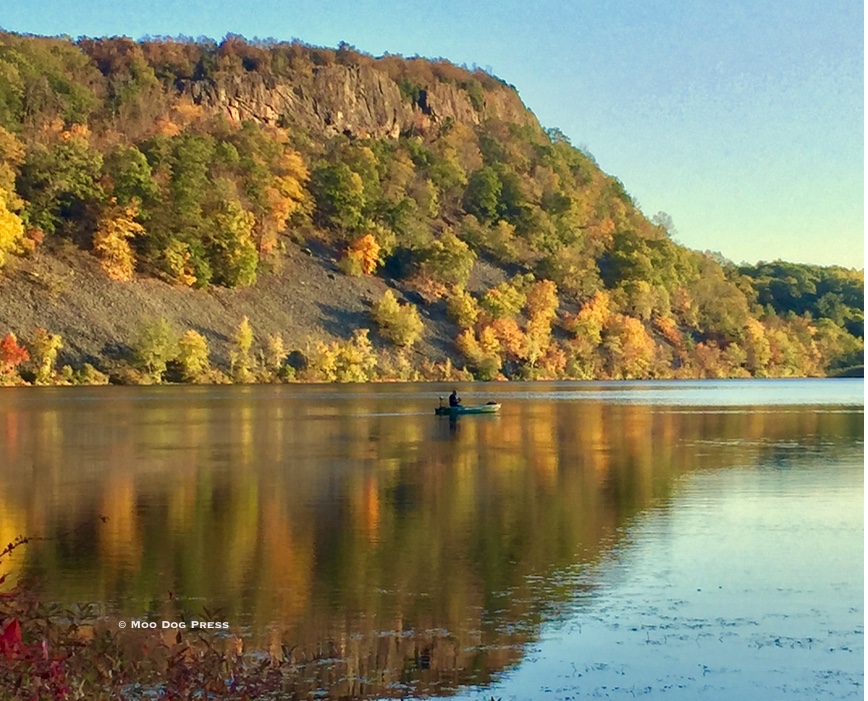
Beseck. (Besek is supposedly the indigenous word for black, as in the waters are black.) A basalt mountain is reflected in the pond below with a calm fisherman. Photo © Moo Dog Press
Related, because of the ancient hills, geology, beauty, this book.
“PREFACE
“This book is our love letter to a landscape and a call for action. We were both born in Meriden, Connecticut, and have lived all, or most, of our lives surrounded by the magnificent traprock crags of the central Connecticut Valley. The Hanging Hills, Mount Lamentation, Chauncey Peak, Mount Higby, and Beseck Mountain—dominating the local skyline—enticed us into countless youthful adventures among their peaks and ledges….”
Reading, learning. Look. And going to find out more about a photographer and Caspar Hall, where the road leads.
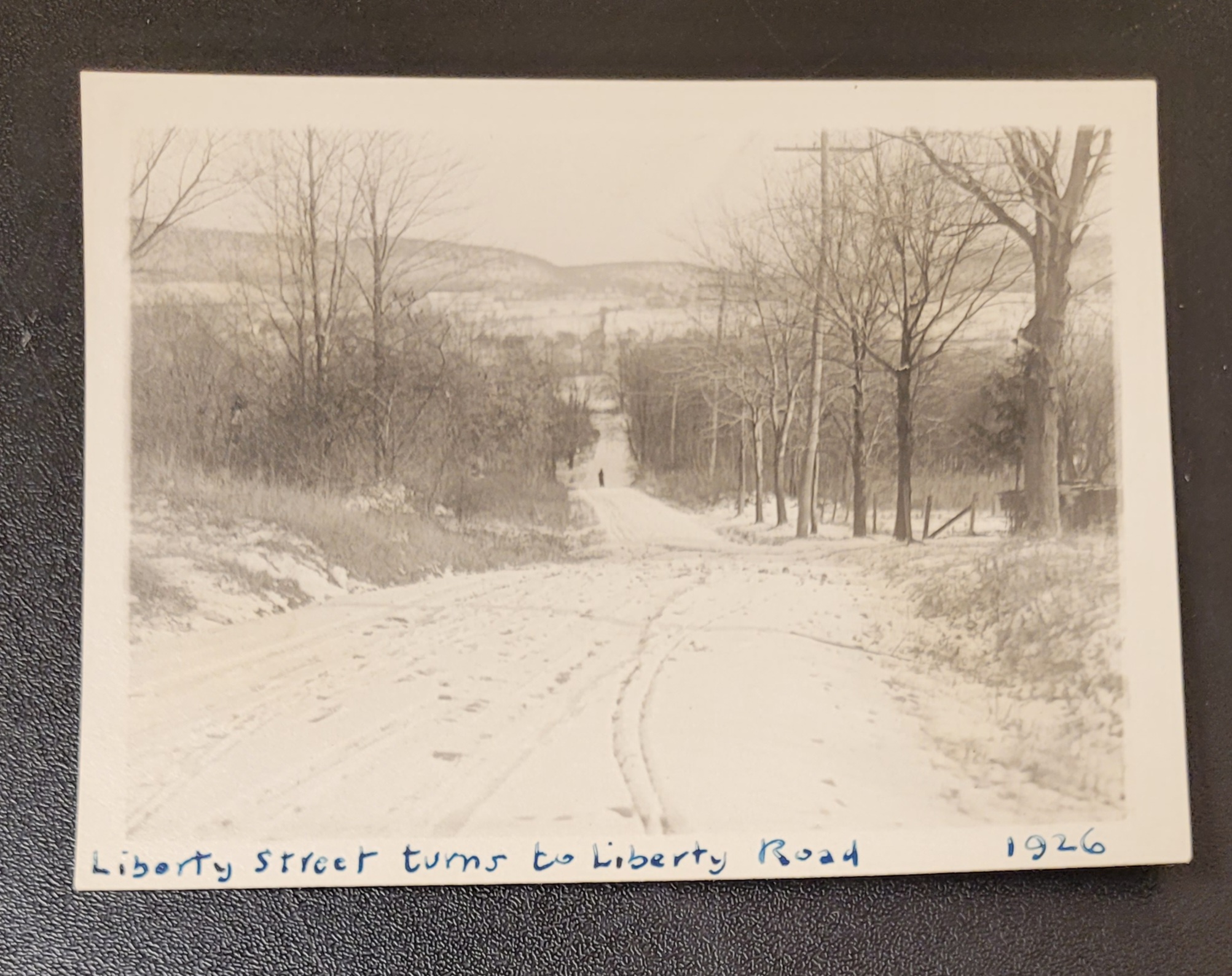
Look at the mountains. “Liberty Street turns to Liberty Road 1926.” Courtesy of Meriden Historical Society, Chris Hendricks.
Note: Portions of this story have been previously published; now updated. For permission to use or repost the images, contact editorccb@gmail.com; do not use or pull off the site without permission.

